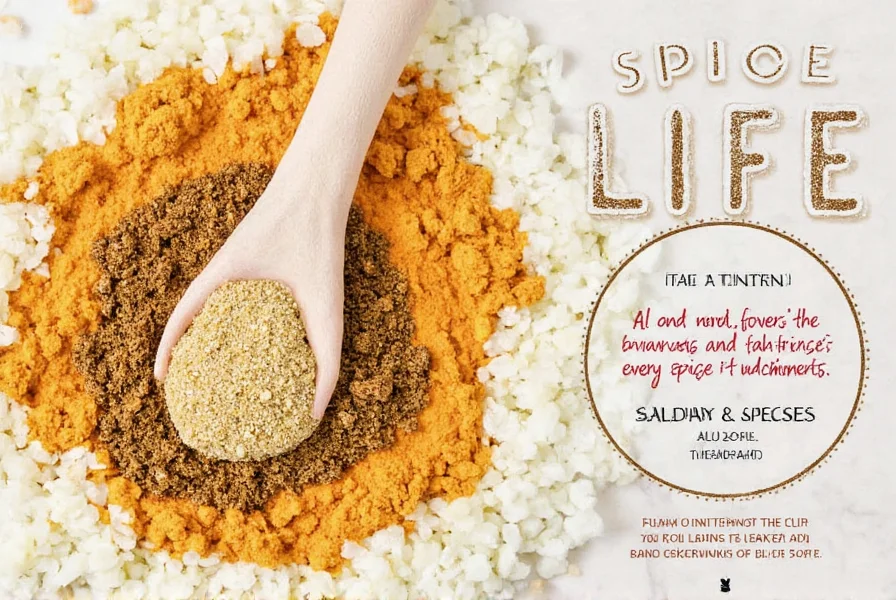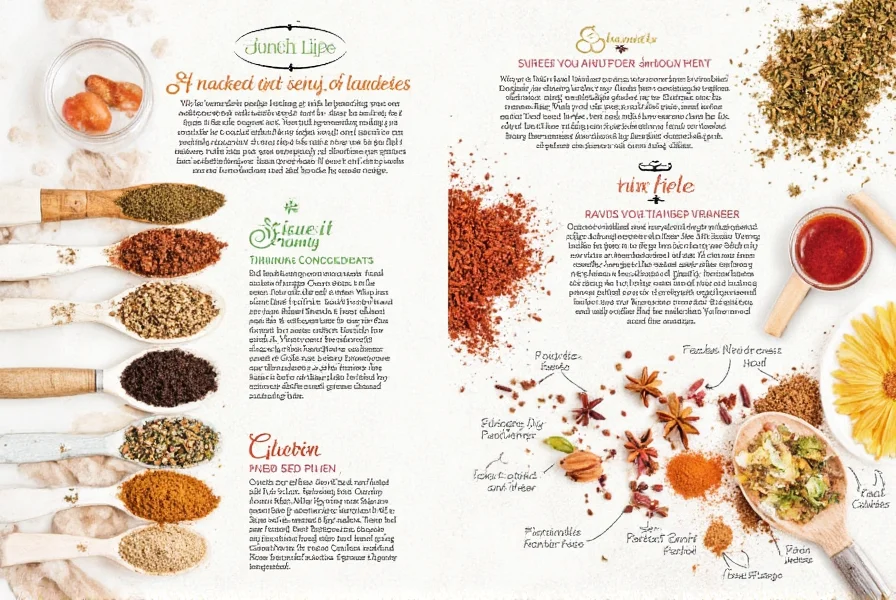Table of Contents
Introduction
Mastering the use of spices and condiments transforms ordinary dishes into extraordinary culinary experiences. This guide provides clear, actionable steps for using spices and condiments effectively—covering precise measurements, cooking techniques, and real-world examples to help you maximize flavor in every meal.

Spices vs Condiments: Key Differences
Understanding the fundamental difference between spices and condiments is critical for proper usage:
- Spices: Dried plant parts (seeds, bark, roots) added during cooking to build foundational flavors. Example: Cumin added to chili while simmering.
- Condiments: Prepared sauces or seasonings added after cooking to adjust final taste. Example: Ketchup on a burger after grilling.
This distinction ensures you apply the right ingredients at the right time for optimal flavor development.

Top 10 Spices: How to Use Them Effectively
These essential spices require specific techniques for maximum impact:
- Paprika: Add 1/2 tsp to roasted vegetables 10 minutes before finishing. For chili, use 1 tbsp early in cooking to develop smoky depth.
- Cumin: Toast whole seeds in oil for 30 seconds before adding to curries. For tacos, use 1 tsp ground cumin per pound of meat.
- Oregano: Add dried oregano to tomato sauces 5 minutes before serving. Fresh oregano works best as a garnish for pasta dishes.
- Ginger: Grate fresh ginger into stir-fries during the last 2 minutes of cooking to preserve brightness. Use ground ginger in baked goods for warm spice notes.
- Garlic Powder: Mix 1/2 tsp per serving into dry rubs for meats. Avoid high heat to prevent bitterness—add after searing.
- Salt: Season in layers: 1/4 tsp during cooking, then adjust at the end. For soups, add salt gradually to avoid over-seasoning.
- Parsley: Use as a finishing touch only. Add fresh parsley to dishes 30 seconds before serving to maintain color and freshness.
- Black Pepper: Grind fresh pepper directly onto dishes just before eating. For sauces, add pepper after removing from heat to preserve potency.
- Cinnamon: Add to savory dishes like Moroccan tagines during the last 15 minutes of cooking. For desserts, mix into dry ingredients before baking.
- Coriander: Toast seeds and grind for curries. Use fresh coriander leaves as garnish for Thai dishes to add citrusy brightness.

Must-Have Condiments: Perfect Pairings
These condiments enhance dishes when applied correctly:
- Ketchup: Mix with mayo for burger sauce (2:1 ratio). Avoid using as direct topping—always blend for balanced flavor.
- Mustard: Dijon mustard works best in salad dressings. Yellow mustard pairs perfectly with hot dogs when applied before toppings.
- Soy Sauce: Use 1 tbsp per serving in stir-fries. Add during the final 2 minutes of cooking to preserve umami without burning.
- Mayonnaise: Thin with lemon juice for sandwich spreads. Mix with herbs for instant aioli for grilled seafood.
- Balsamic Vinegar: Reduce by half for glazes. Drizzle over strawberries or roasted vegetables after cooking for sweet-tart contrast.
- Hot Sauce: Add to dishes at the table for controlled heat. For marinades, mix with oil to prevent separation.
- Relish: Use as a texture enhancer for sandwiches. Mix with mayo for quick tartar sauce for fish tacos.
Actionable Spice Usage Guide
Follow these precise techniques for professional results:
- Measurement Precision: Use measuring spoons for accuracy. For example: 1/4 tsp cayenne in chili versus 1 tsp for spicy salsa.
- Timing Matters: Delicate spices (paprika, chili powder) added late in cooking preserve flavor. Hard spices (cinnamon, cloves) benefit from early addition.
- Heat Management: Toast whole spices in dry pan before grinding. Never burn spices—remove from heat when fragrant (usually 30-60 seconds).
- Pairing Science:
- Savory: Cumin + Coriander + Smoked Paprika for Mexican dishes
- Sweet: Cinnamon + Nutmeg + Allspice for baked goods
- Asian: Ginger + Garlic + Five-Spice for stir-fries
- Storage Protocol: Keep spices in airtight containers away from light. Replace ground spices every 6 months, whole spices every 2 years.
| Spice | Quality Check | Best Use Cases | Pro Tip |
|---|---|---|---|
| Paprika | Deep red color with glossy sheen | Chili, roasted vegetables, deviled eggs | Stir into oil before adding other ingredients for even distribution |
| Cumin | Strong earthy aroma when crushed | Curries, tacos, chili | Toast whole seeds in dry pan for 45 seconds before grinding |
| Oregano | Bright green leaves with strong herbal scent | Pizza, pasta sauces, grilled meats | Use dried for cooking, fresh for garnishing |
| Condiment | Quality Check | Best Use Cases | Pro Tip |
|---|---|---|---|
| Ketchup | Smooth texture with no separation | Burgers, fries, meatloaf glaze | Blend with honey for sweet-and-savory barbecue sauce |
| Mustard | Consistent color without graininess | Sandwiches, salad dressings, marinades | Whisk with olive oil for instant vinaigrette |
| Soy Sauce | Dark brown with rich umami aroma | Stir-fries, marinades, dipping sauces | Dilute with water for sushi dipping sauce |
Frequently Asked Questions
When should I add spices during cooking?
Delicate spices like paprika and chili powder should be added in the last 5-10 minutes of cooking to preserve flavor. Hardier spices like cinnamon and cloves benefit from early addition to develop depth. Always add salt in layers—start with 1/4 tsp during cooking, then adjust at the end.
How do I know if my spices are fresh?
Rub a small amount between your fingers—if the aroma is weak or absent, it's time to replace. Whole spices should have vibrant color and strong scent. Ground spices lose potency after 6 months; store in airtight containers away from light and heat to extend shelf life.
What's the best way to store condiments?
Most condiments should be refrigerated after opening. Soy sauce and vinegar remain stable at room temperature. Always check for separation or mold. For mayo-based condiments, discard if they develop off-odors or texture changes. Store in original containers with tight seals to prevent contamination.
Can I substitute spices in recipes?
Some substitutions work well: smoked paprika for regular paprika (use half), cumin for coriander (in small amounts). Avoid substituting saffron or vanilla—these have unique flavors. When substituting, start with 50% of the original amount and adjust to taste. For ethnic dishes, substitutions may alter authenticity.
Conclusion
Spices and condiments are culinary tools that transform cooking from routine to remarkable. By understanding their differences, mastering precise usage techniques, and selecting high-quality products, you'll elevate every dish with professional-level flavor. Remember: fresh ingredients, proper timing, and measured application are the keys to consistent excellence. Start experimenting today—your taste buds will thank you.












 浙公网安备
33010002000092号
浙公网安备
33010002000092号 浙B2-20120091-4
浙B2-20120091-4